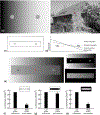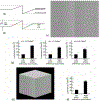Mechanisms underlying simultaneous brightness contrast: Early and innate
- PMID: 32464426
- PMCID: PMC7310601
- DOI: 10.1016/j.visres.2020.04.012
Mechanisms underlying simultaneous brightness contrast: Early and innate
Abstract
In the phenomenon of simultaneous brightness contrast, two patches, one on a dark background and the other on a light one, appear to have different brightness despite being physically equi-luminant. Elucidating the phenomenon's underlying mechanisms is relevant for the larger question of how the visual system makes photometric judgments in images. Accounts over the past century have spanned low-, mid- and high-level visual processes, but a definitive resolution has not emerged. We present three studies that collectively demonstrate that the computations underlying this phenomenon are low-level, instantiated prior to binocular fusion, and available innately, without need for inferential learning via an individual's visual experience. In our first two studies, we find that strong brightness induction is obtained even when observers are unaware of any luminance differences in the neighborhoods of the probe patches. Results with dichoptic displays reveal that eye of origin, although not evident consciously, has a marked influence on the eventual brightness percept of the probe patches, thereby localizing brightness estimation to a site preceding binocular fusion. The third study uses conventional simultaneous brightness contrast displays, but an unusual group of participants: Congenitally blind children whom we were able to treat surgically. The results demonstrate an immediate susceptibility to the simultaneous brightness illusion after sight onset. Together, these data strongly constrain the search for mechanisms underlying a fundamental brightness phenomenon.
Keywords: Brightness perception; Dichoptic displays; Late sight onset; Nature versus nurture; Simultaneous contrast illusion.
Copyright © 2020 Elsevier Ltd. All rights reserved.
Figures





References
-
- Adelson EH (1993) Perceptual organization and the judgment of brightness. Science, 262:2042–2044. - PubMed
-
- Adelson EH (2000). “Lightness perception and lightness illusions,” in The New Cognitive Neurosciences, ed Gazzaniga M, editor. Cambridge, MA: MIT Press, 339–351.
-
- Agostini T, Proffitt DR (1993) Perceptual organization evokes simultaneous lightness contrast. Perception, 22:263–272. - PubMed
-
- Agostini T, & Galmonte A (2002). Perceptual organization overcomes the effect of local surround in determining simultaneous lightness contrast. Psychological Science, 13(1), 88–92. - PubMed
-
- Agrillo C, Miletto Petrazzini ME, & Bisazza A (2016). Brightness illusion in the guppy (Poecilia reticulata). Journal of Comparative Psychology, 130(1), 55–61. - PubMed
Publication types
MeSH terms
Grants and funding
LinkOut - more resources
Full Text Sources
Miscellaneous

